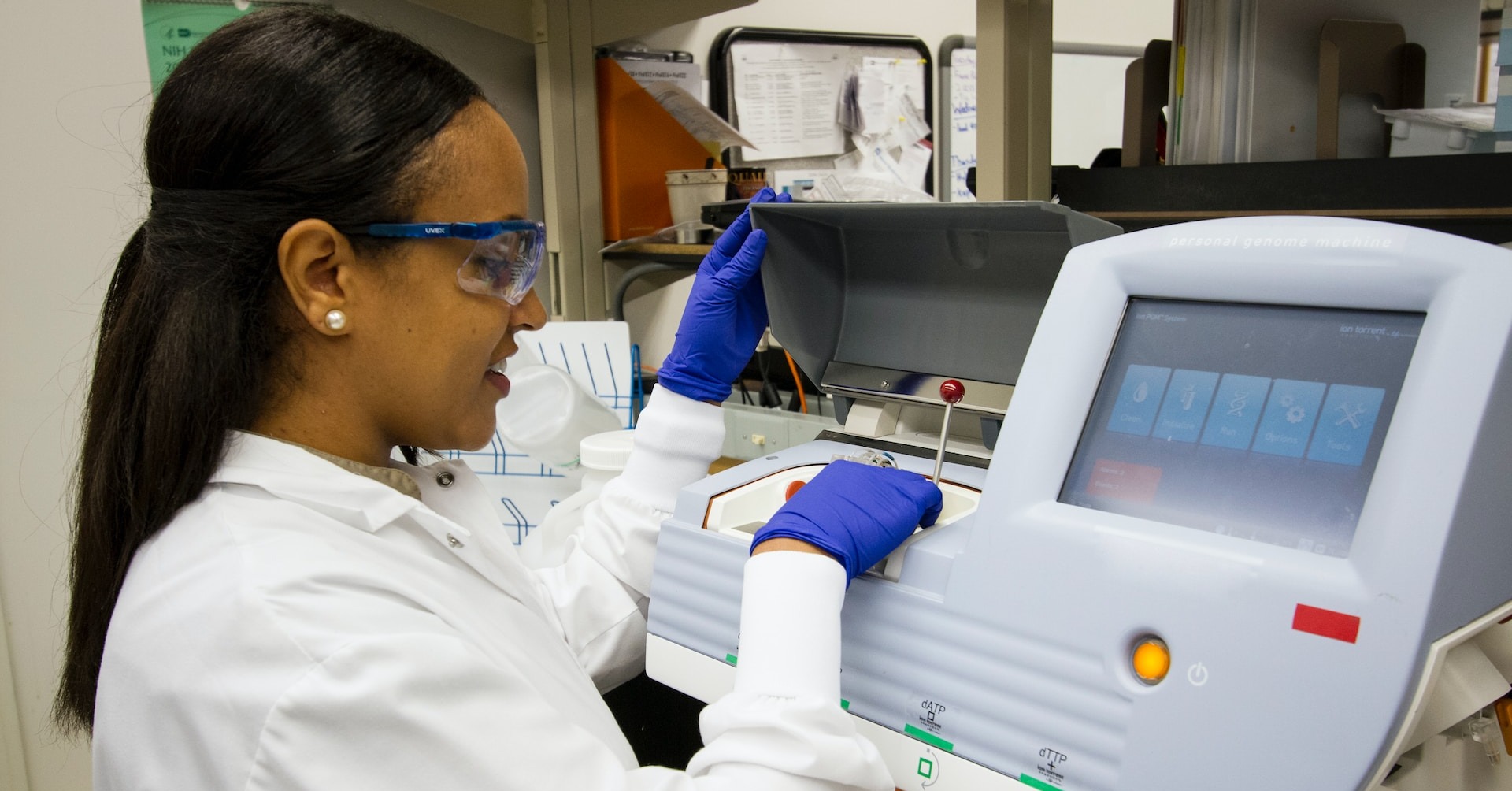
Where Do Epidemiologists Work?
Epidemiologists work in many settings, including hospitals, universities, and federal, [...]
![Occupational Therapy Doctorate Guide: Programs, Career Paths + Earning Potential [2021 Edition]](https://resources.noodle.com/wp-content/uploads/2023/11/alireza-attari-SBIak0pKUIE-unsplash-1024x536.jpg)
Most people have no idea just how much mental and physical coordination ordinary tasks require. Occupational therapists (OTs) do—it’s their job to know after all. OTs are experts in the complex musculoskeletal and neurological systems that work together when we do things like tie a knot in a shoelace, fasten a button, or drink from a cup. They also know how to help when injuries, illnesses, and other impairments make these and other seemingly simple tasks feel incalculably difficult. Their goal is to help people live as independently as possible.
That freedom—not healing—is the driving force that makes this discipline unique. Like doctors and physical therapists, OTs give their patients exercises that improve strength, flexibility, and coordination. Additionally, they address patients’ psychological and emotional needs by giving them tools and strategies that restore or enhance their capacity for self-care and self-determination.
If that sounds like the kind of work you could do for a lifetime, keep reading. Our occupational therapy doctorate guide explores the education you need to become an OT, the career paths open to occupational therapists, what working in occupational therapy is like, and more. In it, we cover:
The American Occupational Therapy Association (AOTA) defines occupational therapy as “the only profession that helps people across the lifespan to do the things they want and need to do” and one that enables “people of all ages to live life to its fullest by helping them promote health, and prevent—or live better with—injury, illness, or disability.”
It’s a broad definition because occupational therapy is a broad discipline. There are so many physical, neurological, and psychological impairments that can impede people’s ability to complete tasks that most of us do each day without thinking about how we do them.
The average OT has thousands of exercises, strategies, adaptations, environmental adjustments, and tools they can share with patients who need help learning or relearning how to do the things that occupy our time. These include manual tasks like preparing a bowl of cereal or putting on clothing and actions we take for granted, like swallowing or looking people in the eye when conversing.
Many people seek help from occupational therapists in the aftermath of injuries. Someone who breaks multiple bones in their hand, for example, might work with an occupational therapist after their cast comes off to relearn to pick up and grasp objects and then to write with a pen or type. OTs also work with patients who have physical or mental disabilities that make completing specific tasks challenging. A person with Down syndrome might work with an occupational therapist to learn the sequence of actions necessary to prepare meals independently or do a particular job in their workplace. Some occupational therapists treat sensory processing issues, developmental delays, and emotional challenges. They can even treat anxiety disorders and social problems.
There are numerous specialty areas of occupational therapy, including:
Some occupational therapists are generalists, while others build their careers around one or more specialty areas or a specific patient population.
Learn more about occupational therapy: What is a Doctor of Occupational Therapy?
Pediatric occupational therapy is a popular OT specialization that differs from traditional occupational therapy in notable ways. The biggest difference between occupational therapy for adults and occupational therapy for children is that OT for adultsOccupational Therapy Doctorate Guide: Programs, Career Paths + Earning Potential ]2021 Edition[ on giving patients tools, strategies, and skills that let them care for themselves. Pediatric OTs, on the other hand, work with patients who need help reaching important physical, cognitive, or social milestones so they can grow into healthy and independent adults.
Occupational therapy for children also addresses a broader range of motor, sensory, visual, emotional, and behavioral concerns. Pediatric OTs help their patients overcome developmental delays, adapt to physical differences, work through eating and nutrition issues, and even correct simple issues like messy handwriting.
Most occupational therapists who specialize in pediatrics work with all kinds of patients, provided those patients are under 18. Some, however, work with specific patient groups, like preemies who need help meeting motor development milestones, children with sensory processing issues, or teenagers with autism spectrum disorders.
There’s significant overlap between the work of occupational therapists and physical therapists, but OTs and PTs have different goals.
According to the American Physical Therapy Association (APTA), PTs are “movement experts who optimize quality of life through prescribed exercise, hands-on care, and patient education.” Physical therapists guide their patients through exercises designed to increase mobility, strength, balance, and flexibility.
Occupational therapists and physical therapists frequently work in the same environments, and many patients see a PT before working with an OT. The physical therapist helps them gain or regain the strength and range of movement they’ll need to accomplish their occupational therapy goals.
A patient who suffered a stroke with paralysis and has significant muscle degeneration, for example, might first work with a licensed PT while in rehabilitative care to combat muscle atrophy and regain motor function. After, they would turn to an OT to relearn how to get dressed, cook and eat, clean, write, and use a computer. Their occupational therapist may also create an environmental modification plan or introduce them to adaptive technology to help them transition home.
As of 2021, there are still two distinct academic pathways aspiring occupational therapists take to join this profession.
The minimum entry-level education necessary to become an occupational therapist is a master’s degree. Master of Occupational Therapy (MOT) and Master of Science in Occupational Therapy (MSOT) programs take two-and-a-half years to complete (including fieldwork) and cover topics like:
Some OTs with master’s degrees go on to pursue a Doctor of Occupational Therapy (OTD) as a post-professional credential.
The alternative to the master’s in occupational therapy is the entry-level OTD. These OTD programs for students with no professional experience in occupational therapy cover the same topics and functionally fill the same niche as master’s-level programs but can include a research component, additional coursework, and additional fieldwork. There are still fewer AOTA-accredited entry-level OTD programs than there are AOTA-accredited MOT and MSOT programs, but that’s changing for reasons we explore below.
Students emerge from both programs ready to take the National Board for Certification in Occupational Therapy test (the NBCOT certification examination). More importantly, an entry-level OTD has approximately the same value as an MSOT or MOT in most clinical settings.
Consequently, some OTs feel strongly that until new degree requirements for occupational therapists go into effect, the master’s is the better choice because it’s the quicker and potentially less expensive route to state licensure. Others argue that the OTD is more valuable in the short-term because it opens up career paths in teaching, research, and leadership and may be more valuable over the long-term if the educational requirements to become an occupational therapist eventually change.
Choosing between the two pathways is challenging because programs cover so much of the same ground. They’re not identical, though, so let your career goals be your guide when researching occupational therapy degree programs. If time is of the essence, you can get your license faster with a master’s. However, a doctoral degree might be the better choice if you want to dive deeper into the discipline before you begin practicing.
“I feel like the extra year of coursework, research, and fieldwork gave me greater experience and the ability to confidently practice my skills in my specific area of interest,” wrote one commenter in a Reddit thread comparing the academic pathways in OT. “After I graduated I felt very prepared to enter the workforce, and I felt that clinics were more interested in hiring me as a new grad… Professionally, I feel I understand in-depth the ethics, policies, and regulations that surround OT. Learning about evidence-based practice, performing function-based activities, and using theory to inform my practice has been INVALUABLE as I’ve become an independent practitioner.”
It’s uncertain whether AOTA’s Accreditation Council for Occupational Therapy Education (ACOTE) will ultimately decide to mandate the entry-level doctorate for licensed occupational therapists. ACOTE has recommended that entry-level occupational therapy programs transition to the doctoral level, and many colleges and universities have done just that. Each time the question of a mandate has arisen, however, the organization has voted to maintain Dual Points of Entry. Given how often educational standards and entry-level degrees come up for discussion in meetings, it’s almost certain AOTA will revisit the possibility of a mandate in the future.
There are now nearly as many accredited entry-level Doctor of Occupational Therapy programs in the US as there are master’s programs, but that still only adds up to just under 40 programs total in each pathway. That leads some aspiring OTs to look into the feasibility of earning an occupational therapy doctorate online. While many guides publish annual lists of colleges and universities with OTDs for distance learners, those lists are typically inaccurate. AOTA leaves no room for misinterpretation when it writes that there are “no accredited entry-level occupational therapy or occupational therapy assistant educational programs that are offered in the online format.” Some educational programs deliver some courses or parts of courses online, but there are no entry-level educational programs offered entirely online.”
What do exist are accredited entry-level OT programs with a distance-learning component. AOTA publishes an updated list of these programs each year that includes the percentage of each program delivered online. A handful of schools let entry-level OTD candidates complete up to 75 percent of the required coursework online, but most deliver less than 25 percent of the didactic entry-level Doctor of Occupational Therapy virtually. Consider, too, that entry-level programs also have experiential internship, fieldwork, and practicum requirements—none of which can be fulfilled virtually.
There are also 100 percent online post-professional OTD programs, but they are relatively rare because even doctoral programs have campus residency, clinical practicum, and field experience requirements. Those that don’t are typically highly selective when it comes to enrollment and tend to attract licensed OTs who have not only bachelor’s degrees and master’s degrees but also years of high-impact clinical experience.
That depends on whether you’re looking at an entry-level or post-professional program. Entry-level OT degree programs accept students with bachelor’s degrees but no professional occupational therapy experience. Those bachelor’s degrees are often in disciplines like biology, kinesiology, psychology, or sociology, though there are pre-OT programs at schools like The University of Texas at Austin and the University of Colorado Boulder. Some entry-level programs accept students with undergraduate degrees in disciplines outside of health science, but these applicants often have prior experience in occupational therapy or healthcare.
Post-professional OTD programs only admit applicants who are licensed occupational therapists. The prerequisites for these programs usually include requirements related to work experience.
The curriculum in occupational therapy doctorate programs varies considerably between entry-level and post-professional programs. Entry-level programs cover a broad range of foundational topics, while post-professional programs tend to focus on specialty areas of OT, research methodologies, or practice administration and leadership.
The University of Pittsburgh‘s School of Health and Rehabilitation Sciences offers both an on-campus OTD program for those new to the discipline and a Doctor of Clinical Science in Occupational Therapy offered entirely online for experienced practitioners. Students in the former program take core courses like:
Meanwhile, students in the post-professional online OTD program take classes like:
Hands-on training is a part of every entry-level OT program because aspiring OTs need to complete observational fieldwork—plus at least 24 weeks of full-time supervised work with patients in various settings—to be eligible for licensure. As a result, third-year occupational therapy students typically spend very little time in the classroom, even in post-professional programs. Entry-level students are placed into local clinical residencies by faculty advisors, while students in post-professional programs often complete clinical practice work, capstone projects, and research at their current practices.
The differences between on-campus and online doctoral degree programs vary from school to school. In entry-level programs with a hybrid component, students simply have the option of taking some of the required core courses online. That doesn’t change what they study or have any impact on AOTA-mandated fieldwork requirements.
On the other hand, students in post-professional programs don’t necessarily have to complete a residency or hands-on work to graduate. Colleges and universities with online Doctor of Occupational Therapy programs for licensed practitioners have a lot more freedom regarding what the core curriculum covers. There is more variation among programs at the post-professional level. Online programs, in particular, may focus more on topics related to practice management, leadership, or research.
Unfortunately, no. Online OTD programs cost about as much as other doctoral-level programs for occupational therapists, and they can be pretty expensive because of how much ground they cover. The most affordable on-campus and online OTD programs cost about $40,000, but it’s more common for occupational therapy doctorates to cost $100,000 or more.
Most OTD students pay for their degrees out of pocket using a combination of funds on hand, student loans, aid, scholarships, graduate assistantships, and grants. It’s highly unusual for occupational therapy doctorate students to receive full or partial funding the way PhD students do.
To determine which schools have the best online OTD programs, we cross-referenced lists of entry-level and post-professional Doctor of Occupational Therapy programs that have a distance-learning component with U.S. News and World Report‘s list of the best occupational therapy programs. These colleges and universities have highly ranked Doctor of Occupational Therapy programs delivered partially or fully online:
It’s tough to pin down what practicing occupational therapy is like because OTs do so many different things for so many different kinds of patients. Occupational therapist Beverly Mulherin illustrated why when she described her experiences in the field in a Quora thread about what it’s like to be an OT:
“I have worked in many different settings and in each setting, every day is full of wonderful, unique experiences. I worked in a NICU with one-pound babies and their devastated parents who were so eager to push through what was happening. I worked with drug-addicted pregnant women who wanted so much to have a drug-free pregnancy and a healthy baby. I worked in nursing homes with so many interesting patients who would tell me their life experiences. I have worked with developmentally disabled children and adults who were diagnosed with intellectual disabilities due to chromosomal abnormalities or genetic syndromes, cerebral palsy, traumatic brain injury, and autism.”
Once you have the skills and knowledge necessary to become an occupational therapist, your career can go in many different directions.
OTs are experts in how injuries, illnesses, and disabilities affect people’s capabilities, but clinical knowledge alone won’t turn you into a great occupational therapist. The best OTs are creative, have a knack for solving puzzles, and use their problem-solving skills whenever a patient doesn’t respond to the usual treatments. They’re also persistent because they know giving up isn’t an option and patient because they realize just how complex everyday tasks are. Progress can plateau. People have bad days. Occupational therapists just keep going.
OTs are also great listeners, with excellent communication skills. They can explain complex therapeutic ideas to individuals and families who don’t have a medical background. Successful occupational therapists also tend to have better-than-average organizational skills. This job involves not only treating multiple people with multiple conditions but also a lot of paperwork. OTs have to keep track of diagnoses, treatments, and patient progress while staying on top of documentation, billing, insurance authorizations, and referrals.
There’s no such thing as a typical day in an occupational therapist’s life because there’s no such thing as an average patient. Most days involve evaluations and/or meeting with established patients, though an OT might spend an entire day working on custom intervention plans or meeting with doctors, specialists, PTs, patient advocates, or teachers. Some days are more paperwork-heavy than others.
“No-one warned me exactly how much time I’d spend documenting—initial evaluations, daily notes, progress notes, updated plans of care, or discharges,” wrote OT Kate Repko in the Quora thread linked above. “It’s A LOT.”
What every day in the life of an OT has in common is the focus. Everything you’ll do when you become an occupational therapist will be for your patients, whether you’re guiding them through strengthening exercises, researching adaptive technologies, or negotiating with insurance companies.
Occupational therapy is an evidence-based health profession driven by research; AOTA keeps lists of OT interventions known to improve patient outcomes. That doesn’t mean, however, that every patient responds to interventions in the same way. Occupational therapists control the treatment process, but they don’t control patient outcomes. Part of becoming an OT involves accepting that there will be some people you can’t help. Some patients won’t do the exercises you give them. Others will do everything right but still fail to reach specific goals because of factors outside their control. You can’t let situations like those erode your optimism.
According to the U.S. Bureau of Labor Statistics (BLS), the largest employers of occupational therapists are hospitals, private practices, school systems, home healthcare services, and nursing homes. Full-time employment is common in the field, but sitting behind a desk is not.
Most practicing OTs spend a lot of time on their feet during the week and may have to lift patients, move patients, or move therapeutic equipment. Many work in multiple settings or travel to patients’ homes and spend hours behind the wheel of their cars each week.
It’s worth pointing out that this can be a messy job. Occupational therapists routinely work with people who are ill or recovering from illnesses and injuries that robbed them of the ability to control their bodily functions. OTs can’t be shy about seeing or uncomfortable dealing with things like blood, pus, vomit, and poo.
Most insurance plans cover some forms of occupational therapy, provided patients have a referral from a doctor, but figuring out which companies cover which services under which circumstances is challenging. Success in this field means knowing your way around the payer and payee policies of private health insurance companies, Medicare, Medicaid, school systems, and other entities in the U.S. healthcare landscape. The luckiest occupational therapists work for practices large enough to have dedicated billing departments. Those who don’t need to be comfortable dealing with the financial side of healthcare.
Advancement in occupational therapy takes different forms. Some OTs transition away from clinical roles and into higher-paying management positions, while others become experts in treating specific patient types or ailments. Still others grow in clinical roles at a single facility (changing titles and getting raises as the years pass), open practices, or become educators. In all five scenarios, ambitious OTs:
There’s no typical career trajectory in occupational therapy. Advancement in occupational therapy might mean:
The BLS reports that the median occupational therapist income is about $85,000 in 2021, but be aware that figure is just one of many averages out there. According to PayScale, the average OT salary is closer to $67,000, and even the most experienced occupational therapists only earn about $79,000. Meanwhile, Indeed reports the national average is $82,000, while ZipRecruiter says the average OT earns $92,000.
The bad news is discrepancies in occupational therapist salary data can make it hard to predict how much you’ll earn as an OT. The good news is that the same discrepancies suggest there are no specific caps on earning potential related to experience, education, certifications, or specialty area. Motivated occupational therapists across specialties can earn $90,000 or more if they make strategic career decisions. Demand for OTs is highest in cities like Los Angeles, Houston, Washington DC, and San Diego, and pay tends to be higher where there’s more demand. OTs who work for home health agencies or in skilled nursing facilities (SNFs) can earn more than their peers in other settings. Travel OTs can earn close to $90,000, and some sources report that they have the highest early-career salaries of all occupational therapists.
According to the 2019 AOTA Salary and Workforce Survey, most occupational therapists earn about $59,000 right out of school. That jumps to $69,000 after OTs have been in the field for just six years, and all the sources above report that salaries continue to grow steadily over time.
Some of the highest-paying occupational therapy positions include:
Experience, certifications, specialty, work setting, and location seem to influence OT pay significantly more than titles, however. Roles that include modifiers like ‘senior,’ ‘lead,’ and ‘manager’ are associated with wage premiums in most fields, but in occupational therapy, there’s little correlation between title and salary except at the director level.
Most occupational therapists start at the same point on the OT pay scale, whether they graduate from a master’s-level program or earn an entry-level OTD. It’s unclear what role education plays in earning potential. The quantifiable wage premium associated with the doctorate is small—$66,000 versus $69,000—but doctorate holders may advance through clinical positions more quickly if their education includes coursework related to advanced clinical topics, management, and program development. Some companies prefer to hire OTD holders when filling higher-paying non-clinical positions in administration, research, and program development. Master’s degree holders join the workforce one year sooner, gaining salary-boosting experience before their peers with doctorates, and may graduate with less student loan debt.
There are some compelling reasons to opt for the OTD over an OT master’s, even if you won’t necessarily earn more.
First, many people in the occupational therapy and medical communities feel strongly that OTs should pursue doctorates to keep pace with physical therapists, who must have a DPT to work in a clinical capacity.
Second, your future colleagues and managers who aren’t OTs may respect your doctorate more than the master’s degrees of your colleagues.
Third, the programs closest to you may all grant the OTD. Many colleges and universities began transitioning their MOT programs to entry-level OTD programs when the AOTA mandate was up for debate. The number of doctorate programs has grown as a result.
Fourth, an OTD can open some doors that a master’s can’t. You’ll pay more in total tuition in a doctorate program. However, you’ll also graduate with the qualifications you’ll need to teach in the health sciences, work in research, become a program developer, or advance into practice management.
Fifth, OTs with clinical doctorates often enjoy a lot more autonomy than those without. In some states, doctorate holders can initiate client care rather than waiting for referrals, allowing them to treat patient issues before medical or surgical interventions are necessary.
Finally, even though ACOTE decided against mandating the OTD as the single academic pathway for occupational therapists, that may still change. Keeping your options wide open might result in a bigger payoff than launching your occupational therapy career one year sooner.
(Last Updated on February 26, 2024)
Questions or feedback? Email editor@noodle.com

Epidemiologists work in many settings, including hospitals, universities, and federal, [...]

In the occupational therapy field, a doctorate can open doors [...]

Genetic counseling is a career that combines science and sensitivity,especially [...]

Neuro-optometrists use neurology and optometry to understand vision and its [...]

Occupational therapists can use yoga poses in their occupational therapy [...]
Categorized as: Occupational & Behavioral Therapy, Nursing & Healthcare